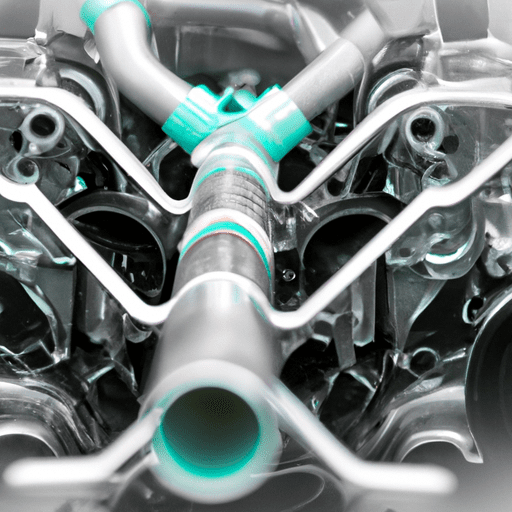Motorcarspecs.com delivers automobile industry news, and its unique content can entice viewers from all over the world. Every day, the Motorcarspecs.com team assists thousands of consumers in conducting vehicle research and comparing pricing on a wide range of automotive products and services. We’ve been pioneering innovative ways for prospective buyers to engage with automobiles and obtain timely and accurate information since January 2020. We created this platform for you, the viewers, to provide an honest evaluation on a relevant automobile, which we will completely review and post on our site.
How a Car Engine Works
The average car engine is composed of around 2,000 different parts, and it is essential for all parts to work together for the engine to function correctly. To put it simply, an internal combustion engine takes air, mixed with a combustible fuel – usually petrol, and after a few chemical reactions, it produces power.
The combustion cycle
For a car engine to produce power, it must go through a four step process known as the combustion cycle. This cycle consists of:
- Intake – Air and fuel are taken into the engine and mixed together.
- Compression – Air/fuel mixture is compressed by the upward movement of the piston.
- Ignition – A spark plug ignites the air/fuel mixture which causes an explosion inside the cylinder.
- Exhaust – The burning air/fuel mixture pushes the piston down the cylinder, producing power. The exhaust is then expelled from the vehicle.
The Components
The main components of a car engine are its cylinders, pistons, valves and crankshaft. These parts are arranged in a specific way to ensure the cycle mentioned above can take place as efficiently as possible.
- Cylinders – This is where the combustion takes place. A typical engine will have 4, 6 or 8 cylinders. Each cylinder contains a piston.
- Pistons – The pistons are always moving up and down within their specified cylinder. This is due to the power produced when the air/fuel mixture is ignited.
- Valves – Valves are situated at the top of each cylinder. They provide a seal between the cylinder and the intake and exhaust ports. This allows air and fuel to enter the cylinder for combustion, and for the exhaust gases to be expelled during the exhaust stage of the cycle.
- Crankshaft – This is a large shaft that extends from one side of the engine to the other. It is connected to the pistons and converts the up and down motion of the pistons into rotational movement, which is then transferred to the wheels of the car via the transmission.
So now that you know the basics of how a car engine works – you can appreciate the amount of real work that goes into keeping your car running smoothly!
“What are the main components of a car engine?”
1. Pistons and cylinder block
2. Crankshaft
3. Spark plug
4. Intake and exhaust manifolds
5. Camshaft
6. Carburetor (or Fuel Injection System)
7. Timing Belt or Chain
8. Oil filter
9. Radiator
10. Alternator
What percent of a car engine is made up of metal?
The exact percentage of a car engine made up of metal depends on the model and make. Generally, most car engines are made up of 75-90% metal, with the remaining 10-25% being other components such as plastics, rubber and gaskets.
What types of metals are used in car engine manufacturing?
Common metals used in car engine manufacturing include steel, aluminum, and iron. Steel is most commonly used for the cylinders, cranks and connecting rods. Aluminum is often used for the cylinder head and pistons. Iron is typically used for castings such as the engine block, transmission case and flywheel.
What type of metal is most commonly used in car engine manufacturing?
The most commonly used metal for car engine manufacturing is aluminum. The lightweight properties of aluminum make it ideal for use in car engines, as it is less likely to cause fatigue and allows the engine to run more efficiently. Aluminum is most often used for the cylinder head and pistons.
What are the differences between ferrous and non-ferrous metals?
Ferrous metals are metals that contain iron, while non-ferrous metals do not. Ferrous metals are magnetic and prone to rust, while non-ferrous metals are not and are typically more resistant to corrosion. Ferrous metals tend to be stronger than non-ferrous metals and are more commonly used in structural applications, while non-ferrous metals are better for electrical and thermal conductivity. Ferrous metals generally cost less, while non-ferrous metals are more expensive.
When it comes to the inner workings of combustion engines, it can be difficult to understand how such a complex machine works. Explaining the fundamentals of how a car engine works is no easy feat, but it is definitely achievable.
At its most basic, a car engine is an internal combustion system that converts gasoline into mechanical energy, which is then used to power a motor vehicle. The engine does this by using a spark plug to ignite a combination of fuel and air. This is then compressed and ignited in the combustion chamber.
The ignition of the fuel and air mixture begins a chain reaction in the engine, which is then translated into power. Piston rings in the combustion chamber move the piston up and down, while a crankshaft turns the piston’s movement into rotational energy. The rotation is then transferred to the flywheel via a connecting rod, which transmits the energy to the transmission system. This energy is used to turn the wheels of the vehicle, and so the car begins to move.
Along the way, other components also play an important role in the process. For example, an electronic control unit (ECU) reads the data coming from various sensors spread throughout the engine. These sensors measure information such as the temperature of the engine, the engine turning speed, and the oxygen levels in the exhaust. The ECU then adjusts the fuel-air mixture accordingly to get the maximum efficiency out of the engine.
The engine is monitored by a computer, which helps to identify any potential problems and alert the driver or mechanic. During the entire process, the cooling system helps to reduce the engine’s temperature and prevent overheating.
Although the science behind how a car engine works is complicated, understanding the basics can help you become more aware of what’s going on inside your vehicle. It may also help you when it comes to preventative maintenance, as well as diagnosing potential issues.
What is a refrigerator””
What is a refrigerator used for?
A refrigerator is a common household appliance used for food storage. It keeps food and other perishable items fresh for longer periods of time by cooling them to a temperature below the normal room temperature.
The refrigerator reduces the growth of bacteria and other microbes that hasten the spoilage of food. It also helps preserve the taste and nutritional value of food.
The refrigerator maintains a cool temperature, allowing foods to stay fresher longer. It also helps reduce food waste and saves money on grocery bills.
Time Management””
What are some tips for effective time management?
1. Set Priorities: Knowing what is the most important will help you focus on what tasks need to be done first instead of spending time on tasks that are not as important.
2. Create To-Do Lists: By writing a to-do list each day, you will be more focused on completing your tasks and will be less likely to forget something important.
3. Estimate the Time Needed: Estimating how much time is needed for each task will help you manage your time better.
4. Take Breaks: Taking a break when needed is important for staying refreshed and focused.
5. Avoid Procrastination: Try to avoid procrastinating and put off tasks until later. Doing so will only take more of your time in the long run.
6. Stay Organized: Staying organized will help reduce the amount of time spent trying to find where you left off on a project or task.
7. Limit Interruptions: Limiting the amount of interruptions will help you stay focused and give you more time to work on your tasks.
8. Delegate Tasks: Delegating tasks to others will help you to focus on the most important tasks.
9. Eliminate Unnecessary Work: Eliminate any tasks or projects that are not necessary or that you can afford to put off for a later time.
10. Know When to Stop: Knowing when to stop working and take a break is important for being effective with your time.


